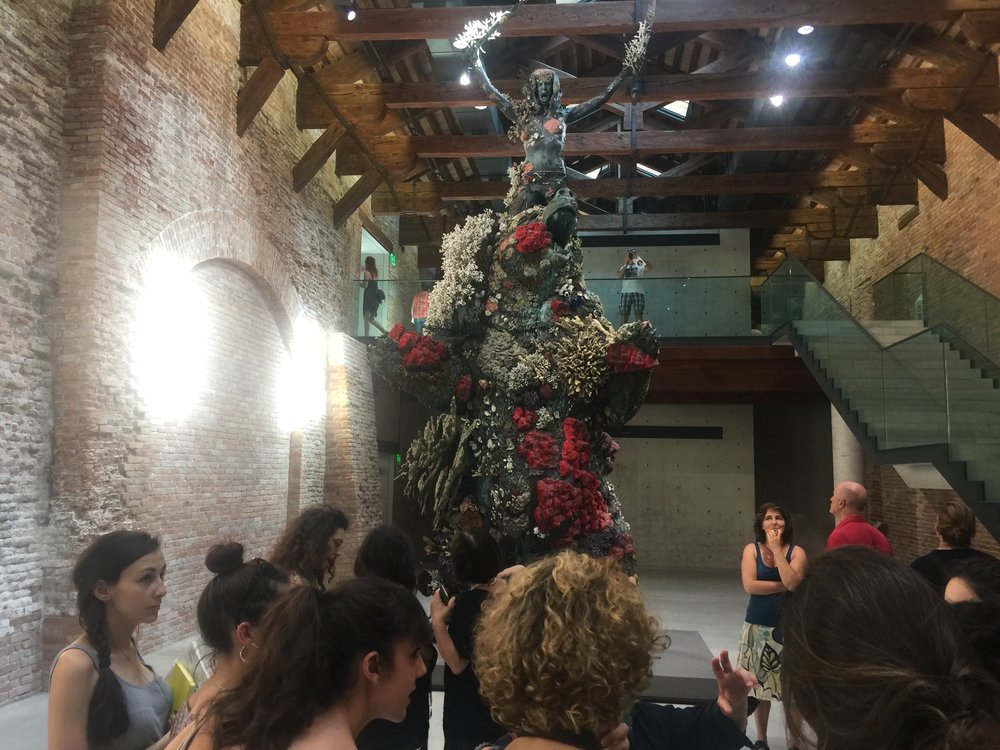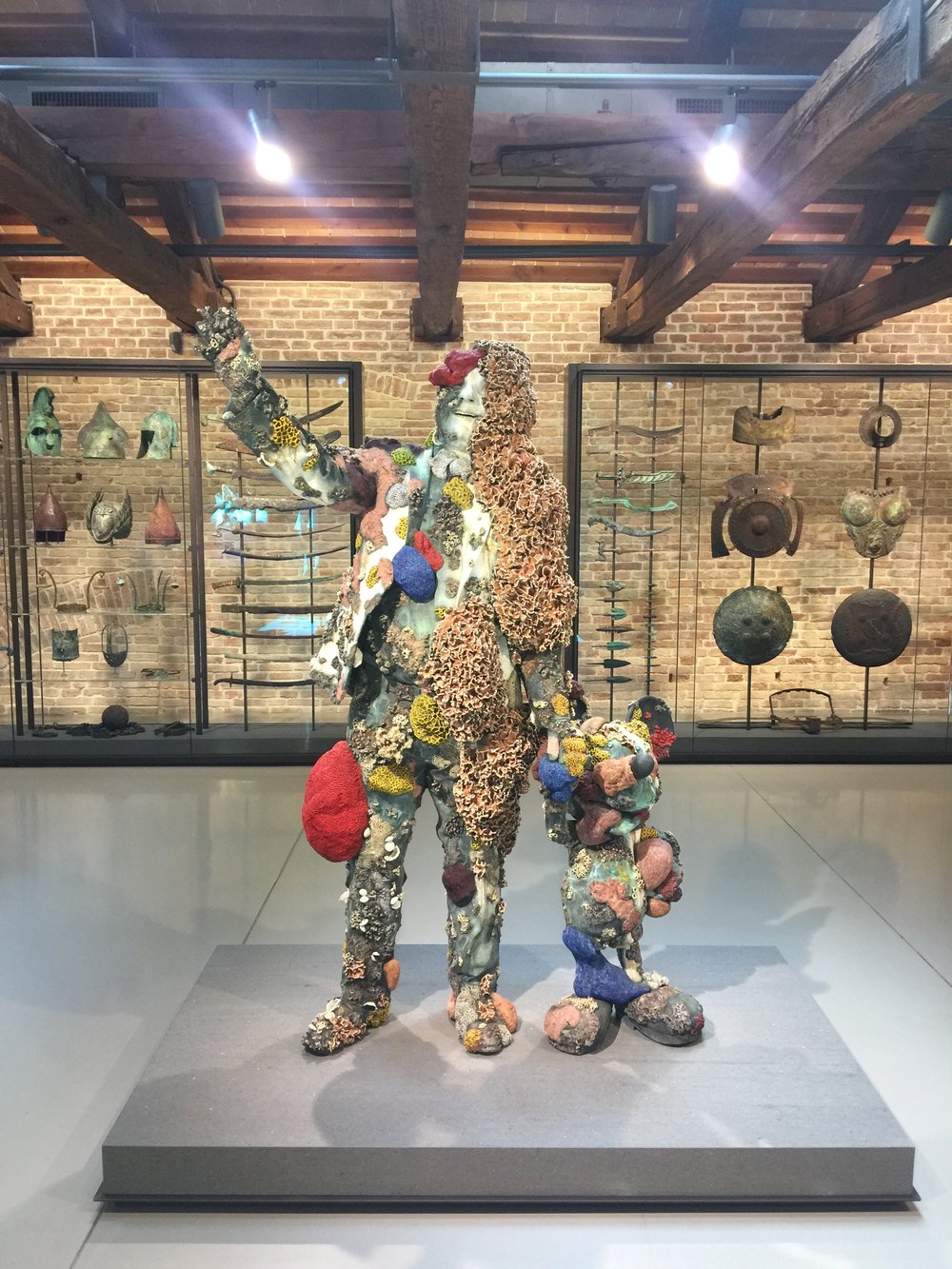Authentic Fakes and Fake Authenticity at the Venice Biennale
November 22, 2017
by Nicolas Tanner
The Venice Biennale billed itself as a platform for contemporary artists to take on challenges in our modern age, such as mass migration and an exponentially increasing rate of technological innovation correlating with a decrease of fixed meaning. Two exhibitions, Treasures from the Wreck of the Unbelievable by Damien Hirst and Laboratory of Dilemmas by artist George Drivas, confront us with our current assumptions about truth, its meaning, and the processes that construct it for us.
Hirst’s piece was perhaps the most memorable, if not most controversial work, on view during the Biennale. Walking into the exhibition, one encounters what appears to be documentary footage of an excavation taking place off the coast of south east Africa. There is also a description of the the exhibition claiming that the works contained within are, in fact, works of art (sculptures, artifacts, relics) recently discovered under the sea and which confirm the myth of a slave who gained his freedom and obtained riches beyond his imagination before ultimately sinking his ship and perishing along with his cargo.

Moving beyond the first stage of the exhibition, one is confronted by what can only be described as ridiculous and purposefully-silly-looking statues which have been ‘recovered’ from the deep. One even depicts a giant bear with a man on top of it wielding two giant curved swords and screaming. They are all covered with chunks of neon and primary colored coral, a falsified sign of their wear and tear in the deep as none of it accurately resembles corals in color, texture, or much else. One is confronted with the fact that the artist is poking them right in the ribs.
Moving beyond the first few statues, one comes to a room of golden artifacts and relics al “rescued” from the deep. This room is quieter. People seem to be contemplating the objects in the way one is supposed to contemplate art objects. Hirst’s real work of art here is not any one object, but the fake authenticity of the exhibition itself and how to exposes the arbitrary nature of what is often seen as “important.” Hirst’s work, the apex of which is a coral covered statue of Mickey Mouse holding hands with Walt Disney, is confronting its audience with the fabricated and essentially silly nature of all conceptions of myth, allegory, and truth decided upon by both ancient and modern man.

In a similar way the Greek pavilion at the Venice Biennale exploits the rhetorical and expressive power of presenting a fabrication as a truth in the service of a larger truth. The Laboratory of Dilemmas by artist George Drivas presents the viewer with the premise that a documentary of a famous laboratory experiment has been recovered. That experiment attempted to solve a particular problem regarding a cellular culture but also presented a new problem with unknown outcomes. The ultimate question posed is this: should the existing status of the native culture be protected at the expense of the foreign one, or should the possibility that the newly discovered culture be able to add something positive to the existing one be cultivated and protected.

Coming to the last clip of the installation maze, the viewer encounters a key final thoughts. One official asks, “Why should we privilege the possibility of the unknown for the known?” This is countered with the argument that failing to engage with the unknown only condemns “the culture” to a static existence in which it cannot change. The audience leaves without an outcome being reached.
In both of these works, the concept of the fake authentic is implemented in order to say something true about contemporary society whether it be our interpretation of art, or our attitude towards evolving as a society in the face of new problems and new information. Both point to what Franco ‘Bifo’ Berardi calls the increasing ‘baroque-ness’ of our contemporary age. They deal with how an increase in information and a decrease in that information’s meaning has changed everything about how we perceive and experience the world we inhabit today. Truth, myth, and allegory have become increasingly interwoven, arbitrary, difficult to parse out, and often leave us with no finite answer to the trajectory of contemporary society.
This piece has been edited from its original version and is appearing in a truncated form for the newsletter.
